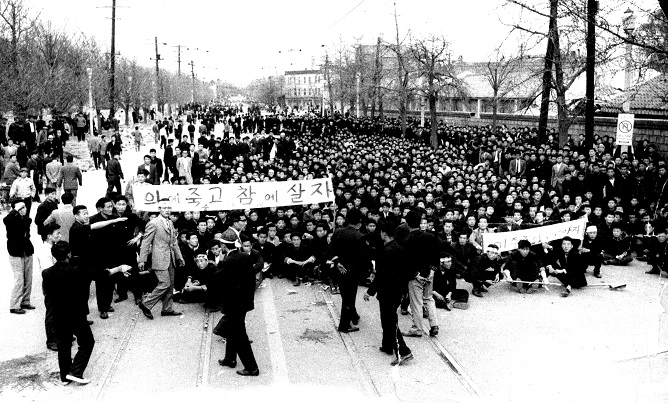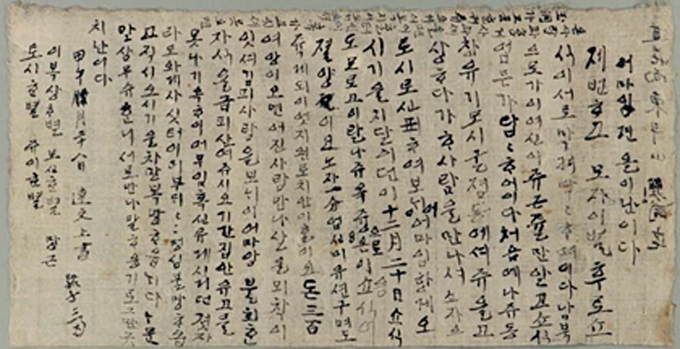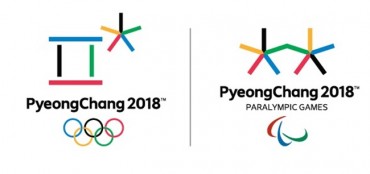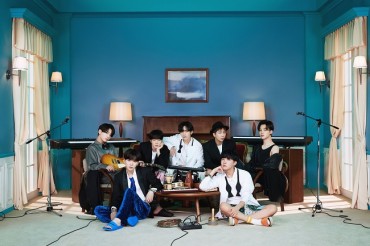
This image provided by the Cultural Heritage Administration shows people chanting slogans during the April 19 Revolution, the historic student-led pro-democracy movement of 1960.
SEOUL, May 18 (Korea Bizwire) — South Korea’s archival records related to two of the nation’s historic grassroots revolutions, which are seen to have contributed to the democratization of Korea, were added to UNESCO’s Memory of the World Register on Thursday, officials said.
UNESCO approved the inscription of the archives of the April 19 Revolution, the student-led democratization movement of 1960, and the Donghak Peasant Revolution, an armed rebellion led by peasants and followers of the Donghak religion in 1894-95 during the Joseon Dynasty, during its executive board meeting held in Paris.
The archives earlier received recommendation for addition to the list by the International Advisory Committee of the UNESCO Memory of the World, South Korea’s Cultural Heritage Administration (CHA) said.
The addition brings to 18 the total number of South Korea’s heritage items on the UNESCO list.
This marks the first time in about six years since 2017 that South Korea’s documentary heritage has been listed on the register, following the inclusion of a royal seal and an investiture book collection of the Joseon Dynasty (1392-1910), and archives of the National Debt Redemption Movement from 1907 to 1910 and of “Joseon Tongsinsa,” which consists of old diplomatic records of Korean envoys to Japan.
According to the Cultural Heritage Administration, the archives of the April 19 Revolution consist of 1,019 materials related to the 1960 civil uprising that ended the dictatorship of South Korea’s first president, Rhee Syng-man, in 1960.
The records portray the causes and development of the revolution, as well as the post-revolutionary handling process.
They are composed of materials from government agencies, the National Assembly and political parties, media articles, personal records, investigative reports, photographs, and videos.
They hold significance as a historical record of achieving democracy through nonviolent means in opposition to dictatorship.
Although the uprising left 186 innocent students and citizens dead and about 6,000 others injured, the protesters, including high school and university students, resisted until the end to realize their desire for a democratic government.
It has been judged to be the first successful nonviolent popular revolution in the Third World and to have influenced student movements worldwide in the 1960s.

This image provided by the Cultural Heritage Administration shows a letter written by a peasant troop member during the 1894-95 Donghak Peasant Revolution.
The archives of the Donghak Peasant Revolution are essential materials showcasing the modern transition period of Korean society.
The collection comprises a total of 185 documents related to the uprising against the corruption within the ruling class and advocating for a society rooted in justice and equality.
The collection encompasses data produced during the historical incident by the Korean government, the Donghak peasant troops, civilians who participated in suppressing the uprising, and the Japanese legation in Korea.
During the evaluation process for inscription, the records were widely recognized for their significance in world history as a “repository of memory” of the Korean grassroots who fought for universal values of freedom, equality and human rights.
The CHA evaluated the two newly added items as “historical records that have greatly contributed to the development of democracy in South Korea” and “values that people not only in the country but around the world should learn from and remember.”
Meanwhile, North Korea’s “Hon Chon Jon Do” (Complete illustration of the Astronomical Chart) was also included in the UNESCO Memory of the World Register.
With this, the North now has two items on the list alongside “Muye Dobo Tongji,” a martial arts textbook published in 1790.
(Yonhap)






